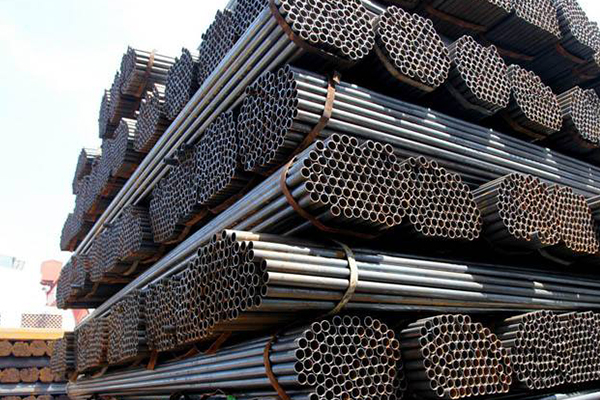Scaffolding systems are essential in the construction industry, providing a temporary and safe structure for workers to perform tasks at various heights. Among the different types of scaffolding systems, Ringlock and Cuplock are two of the most popular. Each system has its unique features, advantages, and applications. In this article, we will explore the differences between the Ringlock and Cuplock scaffolding systems, and how Wancheng Tai, a leading scaffolding supplier and manufacturer, plays a crucial role in delivering high-quality scaffolding solutions.
What is ringlock scaffolding system?
The Ringlock scaffolding system is known for its versatility and ease of use. It is a modular system that consists of vertical posts, horizontal ledgers, diagonal braces, and circular rosettes with multiple connection points.
PartⅠ: Design and Components
- Vertical Posts (Standards): These are the main vertical supports in the Ringlock system. They feature rosettes at regular intervals to allow for flexible connection points.
- Horizontal Ledgers: Connect to the vertical posts and provide horizontal support.
- Diagonal Braces: Enhance the stability and rigidity of the scaffolding structure.
- Rosettes: Circular discs with multiple openings, allowing for the connection of ledgers and braces at various angles.

PartⅡ: Key Features
- Flexibility: The rosette design allows for multiple connection angles, making it highly adaptable to complex architectural structures.
- Ease of Assembly: Components are easily connected using a simple wedge mechanism, reducing the time and labor required for setup and dismantling.
- Stability and Safety: The design ensures a robust and stable structure, providing a safe working platform for construction workers.
PartⅢ: Applications
The Ringlock scaffolding system is widely used in various applications, including:
- Building construction
- Industrial maintenance
- Bridge and tunnel construction
- Event staging
What is cuplock scaffolding system?
The Cuplock scaffolding system is another modular scaffolding system, known for its robust design and quick assembly. It consists of vertical standards with fixed cup joints and horizontal ledgers with blade ends.
PartⅠ: Design and Components
- Vertical Standards: Feature fixed cups at regular intervals for connecting ledgers and braces.
- Horizontal Ledgers: Have blade ends that fit into the cup joints on the vertical standards.
- Diagonals and Transoms: Provide additional support and stability to the structure.
- Top and Bottom Cups: The bottom cup is welded to the standard, while the top cup is movable to secure the ledger blades.
PartⅡ: Key Features
- Quick Assembly: The cup joint mechanism allows for rapid connection and disconnection of components, significantly speeding up the assembly process.
- High Load Capacity: The Cuplock system is designed to bear heavy loads, making it suitable for high-rise and industrial projects.
- Durability: Made from high-strength steel, the Cuplock system is built to withstand harsh working conditions.

PartⅢ: Applications
The Cuplock scaffolding system is ideal for:
- Large-scale construction projects
- High-rise buildings
- Industrial maintenance and repair
- Formwork and shoring
Key Differences
While both Ringlock and Cuplock scaffolding systems offer modular solutions for various construction needs, there are distinct differences between them.
Connection Mechanism
Ringlock: Utilizes a rosette system with multiple connection points, allowing for flexible angles and configurations. Connections are secured using a wedge and pin mechanism.
Cuplock: Features a cup joint system with fixed angles, where ledgers and braces are connected using a top and bottom cup that secure the components in place.
Flexibility and Versatility
Ringlock: Offers greater flexibility due to its rosette design, which can accommodate multiple angles and complex geometries.
Cuplock: Provides a more straightforward setup with fixed angles, suitable for standard and repetitive scaffolding structures.
Assembly Speed
Ringlock: While easy to assemble, it may require more time compared to Cuplock due to the need for precise alignment of the rosettes and wedges.
Cuplock: Known for its rapid assembly and disassembly, the Cuplock system’s cup joint mechanism allows for quick and efficient connections.
Load Capacity and Stability
Ringlock: Provides excellent stability and load-bearing capacity, suitable for various construction and industrial applications.
Cuplock: Designed to handle heavy loads, the Cuplock system is particularly well-suited for large-scale and high-rise projects.
The Role of Wancheng Tai as a Scaffolding Supplier and Manufacturer
Wancheng Tai, a prominent scaffolding supplier and manufacturer, plays a vital role in providing high-quality scaffolding systems, including both Ringlock and Cuplock.
Choosing the Right Scaffolding System
Selecting the appropriate scaffolding system depends on several factors, including the project’s requirements, site conditions, and budget. Here are some considerations for choosing between Ringlock and Cuplock scaffolding systems:
Project Complexity
- Ringlock: Ideal for projects with complex geometries and varying angles, such as bridges and industrial plants.
- Cuplock: Suitable for straightforward, repetitive structures like high-rise buildings and standard construction projects.
Load Requirements
- Ringlock: Offers strong load-bearing capacity, suitable for various applications.
- Cuplock: Designed to handle heavy loads, making it ideal for large-scale and high-rise projects.
Assembly Time
- Ringlock: May require more time for assembly due to the need for precise connections.
- Cuplock: Provides quicker assembly and disassembly, saving time on large projects.

Conclusion
Understanding the differences between the Ringlock and Cuplock scaffolding systems is essential for selecting the right solution for your construction needs. The Ringlock system offers flexibility and adaptability for complex structures, while the Cuplock system provides robust support and quick assembly for large-scale projects. Wancheng Tai, a leading scaffolding supplier and manufacturer, ensures that both systems meet the highest standards of quality and safety, providing reliable scaffolding solutions for various industries.



